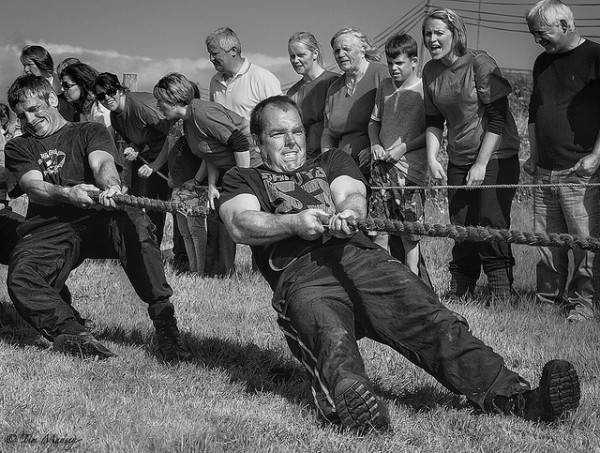
The power centers of California have traditionally alternated between San Francisco and Los Angeles. Today, though, the old patterns are being disrupted, and new spheres of influence have arisen. Who really runs this state? In advance of Zócalo’s panel, several prominent Californians offer their answers.
These days, the Central Valley runs this state
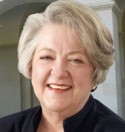
California is changing. In the days of the Gold Rush, San Francisco was the hub of all things financial and political in California. In the 20th century, when the Hollywood hillside and Mickey Mouse signs became the icons for California, Los Angeles and Southern California stepped into the spotlight–literally! But watch out. Here comes the new California: here comes the Central Valley!
California’s Central Valley continues to be one of the fastest growing parts of the state, with residents coming into the rapidly suburbanizing communities that feed coastal employment centers, and immigrants arriving from Mexico, South and Central America, and Asia. The growing population is still young, occupied with finding work and caring for children (the Valley has one of the highest fertility rates in the nation), and civic participation has not been fully realized. Nonetheless, the Valley is often the swing vote in state elections. With the Bay Area and Los Angeles predictably Democratic, and San Diego and the mountain counties predictably Republican, the Valley vote often tips the scale in one direction or another.
Since Proposition 187 in the mid nineties and the continuing debate about immigration, many of the historically conservative Latino voters have moved to the left, giving their support to Democrats. But there are other visceral issues for Valley voters centered around jobs and education and the health of the environment. The political heft of the Central Valley has yet to be fully felt, but with each cycle comes greater collaboration and a better understanding of the importance of the political process and its impact on the region. In this new century, look for greater impact, and maybe even dominance, from the rapidly growing and still changing Central Valley!
Carol Whiteside is a partner of California Strategies, LLC.
————————————-
Actually, Bakersfield and Fair Oaks run this state
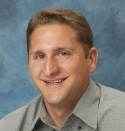
Every four years in American politics, we are reminded that the most powerful political voices in our country are not K-Street lobbyists, Wall Street tycoons, Manhattan’s socialites, or the happy few who can afford a $5,000-a-plate fundraiser with the president in La Jolla. The members of America’s true power elite are more like the rest of us. Only colder.
They are, first and foremost, Iowa’s caucus voters and New Hampshire’s primary electorate. Each micro-state’s voters, of course, wield outsized influence over who will challenge an incumbent president or, in years like 2008, pick the entire presidential field. Now that is true power. Later in the year, we remember that not all voters in the rest of the country are created equal, when the residents of battleground states become the targets of endless campaign ads and ceaseless campaign visits. The rest of us feel largely left out, reduced to watching our nation’s presidential contests play out on CNN.
Although California politics does not provide the same quadrennial reminders, it is governed by the same logic. Who runs California? Not Silicon Valley’s mega-rich, whose primary role in politics seems to be to enrich the campaign consultants who run their losing campaigns. Not Hollywood luminaries, who are sought after as political ATMs and policy photo-ops but who rarely engage in significant lobbying efforts.
No, the most powerful zip codes in California politics belong to those who live in pivotal legislative districts, the ones that could deliver Democrats the 27th vote in the Senate and the 54th vote in the Senate (but which rarely do). Those are the marginal votes that matter, that have shaped our state’s fiscal policy over the past decade. In political science terminology, the legislators who inhabit the ideological region about 2/3 of the way across California’s political spectrum are the “pivots,” and the state’s policy has turned around their designs. They are the moderate to conservative Republicans who delivered the votes for a compromise budget in February 2008 but have withheld their votes from any further tax increases since then. More than anyone, these lawmakers and those they represent wield true power in California.
So, sorry, San Francisco, Los Angeles, and La Jolla. You don’t run California. It is voters in places like Modesto, Santa Maria, Clovis, Bakersfield, Hesperia, and Fair Oaks, the ones who elect the 27th Senator and 54th Assemblymember, who rule the Golden State.
Thad Kousser is associate professor of political science at UC San Diego.
————————————-
No, Hemet runs this state
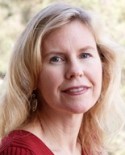
What does the area once called “The Inland Empire” have to offer the state of California in terms of legislative power, influence, or redemption? This is the place many Californians might overlook or even disparage–Riverside and San Bernardino Counties, with the old county seats and citrus or railroad heritage towns (Riverside, San Bernardino, Colton, Redlands, Rialto) mixed with the hundreds of new developments in places like Menifee, Hemet, Murrieta, Rancho Cucamonga, Highland.
Fontana and Corona and Temecula might be instructive–places born of the past in terms of jobs and history–Fontana had Kaiser Steel, Corona had lemon groves, and Temecula featured ranches and a stop on the Butterfield Stage route. Now they feature thousands of new houses in tracts that viewed from the air look like white-teethed crescent grins covering the hills and flatlands. The desert communities and the Coachella Valley, where date palms and vineyards used to outnumber people, have new developments everywhere.
Inland southern California has one immense source of potential power–a lot of people. The 2010 Census data shows Riverside County recorded the highest percentage increase in population in California (41.7 percent) and the largest numerical growth (644,254 people). San Bernardino County increased by 325,776 people. Without considering the uncounted, this place grew by a million people. People moved into the area from many places, including more expensive Los Angeles and Orange and San Diego Counties, and children were born here.
Anecdotally, as a native of Riverside who’s lived here all my life except for six years of college, I can say that no matter what race, many Inland people have lots of kids. A lot of my friends have between three and six kids–white, black, Asian, Mexican-American, Mexican-born. (It’s fascinating at school events to see a white conservative Christian family with six kids sitting next to a Catholic Mexican-American family with six kids.) This is the land of new houses advertised with six bedrooms.
But whether those old and new residents will vote, or show any legislative muscle, is another question. This area has one of the nation’s highest unemployment rates (hovering at 25 percent in some places, and averaging 15 percent for the past two years). It also suffers from one of the country’s highest foreclosure rates and child poverty rates. Will the young people who make up a large portion of residents–Asian and Latino youth overtaking older whites–find their own voices and vote, or will they withdraw from a state government system that they feel doesn’t work for them?
Interestingly, two of the most prominent politicians from this area, which was once heavily Democratic and now leans Republican, are extremely conservative. Senator Bob Dutton from Rancho Cucamonga is one of the most conservative members of the state legislature, and Darrell Issa, Republican Congressman from the 49th District (Murrieta/Temecula), is not only the wealthiest member of Congress, but was also a leader of the effort to recall Gray Davis back in 2003. What will the potentially huge groundswell of young voters think of them in a few years?
Susan Straight is distinguished professor of creative writing at UC Riverside. Her novels include Highwire Moon and Take One Candle Light a Room.
————————————-
121 people run California, and you probably don’t even know them
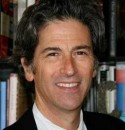
With a nearly $2 trillion economy and more varieties of industries than any other state, California is too vast to be run by a single economic sector. Even powerhouses such as agriculture and entertainment together make up less than 4 percent of the state’s economy.
The same is true of California’s culture. While Los Angeles is of course closely linked to movie-making, other parts of the state play big roles in music, literature, painting, video games, and more.
In politics, however, the state is run by very small, little-noticed groups in California’s fifth-largest city. The state is governed by 121 people–the governor plus 120 legislators–who every year determine how the state will collect taxes and fees of $120 billion per year, spend nearly $250 billion per year (including federal funds), oversee the education of nine million students, and determine prison populations, park closings, and environmental protection.
Everyone knows their governor, but how many readers even know the name of their state assembly person or state senator? Not many. As a result, those 120 state legislators are selected and influenced by narrow special interests. That’s a problem, because when it comes to jobs, education, health, safety, or transportation, the actions of a single state legislator have more impact on the lives of ordinary Californians than do the actions of any other public official.
This will change only when Californians start paying attention to the legislators who run their state. Recently we launched a non-profit organization called Govern For California so that Californians can learn about the importance of state legislatures and the power of voters to determine California’s governance. Nearer to the election, we will form an independent expenditure committee in support of courageous candidates from any and all parties and from any and all parts of the state. When it comes to politics, the voters can and should run California!
David Crane is a lecturer at Stanford University and president of Govern for California.
————————————-
If anyone runs this screwed-up place, it’s news to me
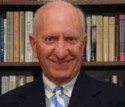
The halcyon days when San Francisco was king are long gone. They ended when Willie Brown stepped down as speaker of the Assembly. In addition, the city has simply become too weird to wield influence as it once did.
I have always believed the political, money, and social pecking order in California begins in Sacramento, then Los Angeles, San Francisco and the Bay area, Orange County, and, in last place, San Diego.
But, in the real world, who cares who’s up or who’s down in the Golden State?
California has become the most dysfunctional state in the union (sorry, Mississippi). It is shameful. Of course, most of the blame goes to our political “leaders,” but we, the citizenry, do not deserve a pass. We have tolerated the incompetence of our pols while adding to it by passing one idiotic statewide initiative after another and, in the process, totally screwing up Hiram Johnson’s good deeds.
It is so bad that when Jerry Brown ran for governor he mindlessly promised not to increase our taxes without the consent of the voters. That was completely uncalled for. Had Ms. Whitman spent $300 million rather than $150 million of her own money, she still would not have won (no Republican is ever again likely to be elected to a statewide office). Even so, Brown made an unnecessarily stupid promise and by that act ensured he would be a failed governor
So, how do we fix it?
By doing the following: 1) repealing Proposition 13, 2) repealing term limits, 3) repealing the 2/3 vote requirement for budget approval, 4) repealing the initiative system, and 5) instituting public funding of state elections.
What are the chances of it happening? Nil. Which is why California will remain what it has become: the most dysfunctional state in the union.
George Mitrovich is president of The City Club of San Diego.
*Photo courtesy of TimMunsey.



